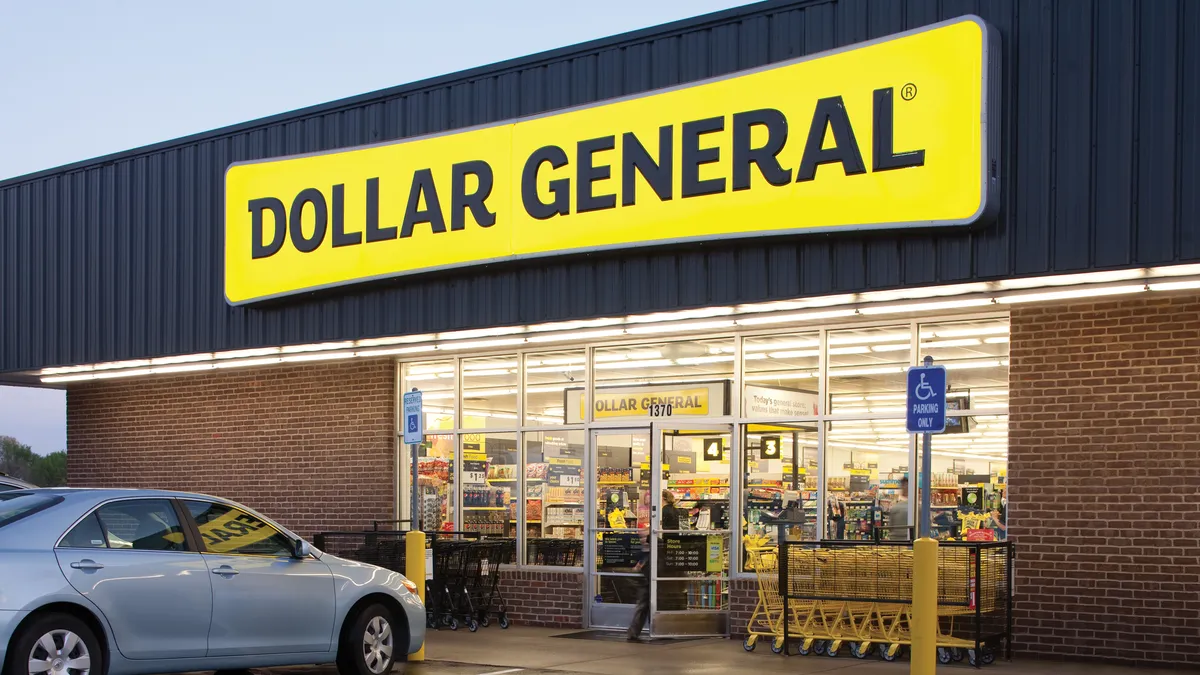Dive Brief:
- Dollar General is increasing the number of stores it remodels that include perishable items, the company noted during its recent earnings report. Of the 1,000 remodels Dollar General completes this year, 400 will follow its “traditional plus” model that includes 34 coolers for perishable items. Chain-wide, the discount operator is adding more than 20,000 coolers to its store base.
- Many of the updated stores will include fresh produce, which has added incremental dollars in test stores and drawn new customers, noted CEO Todd Vasos during Dollar General’s earnings call last week. By the end of this year, the company will have 450 stores featuring fresh produce.
- Dollar General is also remodeling its snack and beverage aisles to capitalize on consumer demand, and will offer more healthy options including low-sodium and protein-rich selections.
Dive Insight:
Dollar General’s legacy is in consumables that shoppers look to in a pinch when they’re hungry, when they’re out of soap or toothpaste or need decorations for a party. It is typically not the place where people go to stock up on groceries, but the chain wants to change that — at least to some degree.
The discount retailer operates in mostly rural communities where it’s one of the few, if not the only, food retailer around. The company is able to operate in low-density markets because its overhead is low and because its assortment is almost entirely shelf-stable. Adding perishable goods is expensive, and risks reducing margins due to sluggish demand.
But clearly, Dollar General is seeing enough demand in some markets to justify expanding availability beyond a round of test stores. The company has made life tough for independent retailers’ sales, since mom-and-pop grocers are often the only retail food destination in small towns across the U.S. Dollar General’s expansion into fresh will turn up the heat even further, especially since these retailers simply can’t compete with the company on price.
Coinciding with its perishables push is Dollar General’s test of an urban format called DGX that offers prepared foods, beverages and a limited grocery assortment. Started last year with a store in Nashville, DGX now has three locations and seeks a younger shopper that may not have shopped at Dollar General in the past.
Like Aldi and Walmart, Dollar General wants to reach new customers — and specifically, higher-income customers. Its scale remains one of its greatest assets, with more than 14,000 stores in the U.S. and plans to build more than 1,200 additional locations this year.
The high cost of stocking perishables and the low density of many Dollar General markets mean the company’s fresh expansion will likely only touch a fraction of its stores. But those that do will force area grocers to step up their game. Independent supermarkets can lean on their broad assortment, customer relationships and service to compete, but Dollar General’s low prices will poach shoppers and cut into sales.
Overall, this is yet another reminder that grocery stores no longer have an exclusive on “fresh” offerings. Discounters, drug stores, club stores and now dollar stores are increasing their perishables assortment, forcing supermarkets to offer better value to consumers or risk perishing themselves.









